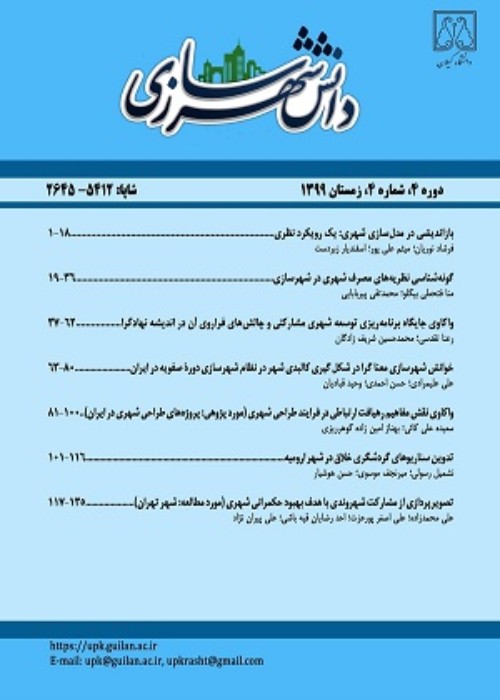Theoretical investigation of the concept of Conviviality in Urban Space studies Using Content Analysis (Studies From 1998 to 2020)
Since the emergence of using conviviality concept in urban planning field of study in 1998, different scholars have addressed this concept as a quality of urban spaces. Although, few of them consider conviviality as a complex and fundamental quality but, most of the studies used it as an obvious and one-dimensional objective. Therefore there is no comprehensive conceptual framework which can explain conviviality in urban space thoroughly. Another concern of this article is the lack of knowledge about this multilayered quality of space, in Iranian urban literature. To better understand the multi-aspects of convivial quality in urban spaces, the main objective of this article is to extract different concepts, categories and themes from reliable previous studies. Although, this quality is known as a context-based quality, but there is an urgent need for a conceptual framework to better study a specific physical context, considering this quality. The article is based on qualitative research and uses content analysis methodology in order to study 40 related research papers and thesis from 1998 to 2020. Three-phased coding system is used to extract total 178 concepts and 34 categories, which eventually resulted in conviviality conceptual framework. The final circular shaped framework includes 4themes and 8 layers. The most important theme in convivial urban spaces model, is socio-cultural dimension which shows the importance of intangible aspect of this quality in previous studies. The hierarchical model has the ability to quantify the results of convivial quality in urban spaces. The closer the categories are to the center of the model, the more important the category is. Therefore, if one category is located in the first layer (the closest layer to the center of the model) the weight factor of the category is considered as the highest one. Another main feature of this model is flexibility and applicability which helps future researchers to use it in variety of urban areas. Of course, based on different urban spaces, the priority of categories may change or even some new categories may be added to the model. To prove this claim, future studies on the specific physical context are required.
- حق عضویت دریافتی صرف حمایت از نشریات عضو و نگهداری، تکمیل و توسعه مگیران میشود.
- پرداخت حق اشتراک و دانلود مقالات اجازه بازنشر آن در سایر رسانههای چاپی و دیجیتال را به کاربر نمیدهد.



